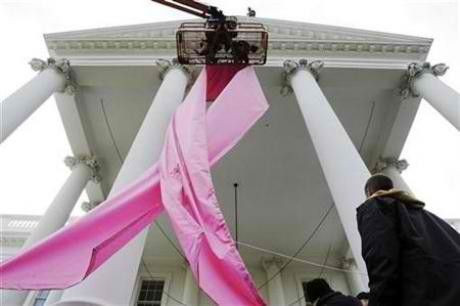Who Was Susan G. Komen?

Susan G. Komen for the Cure, the world's largest breast cancer charity and advocacy group, revoked a decision to suspend a grant partnership with Planned Parenthood on Friday after it was met with an enormous public and media outcry.
As critics continue to question Komen's political motivations behind its initial decision to end ties with the family planning advocate -- the target of a congressional investigation at the behest of conservative Republicans -- and even question the mission of Komen itself, here's a look at the woman:
Susan Goodman was born in raised in Peoria, Ill., where she was the the star of our hometown... the high school homecoming queen, the college beauty queen, wrote her younger sister Nancy G. Brinker, on the Komen foundation's Web site. Goodman married her college sweetheart Stan Komen, worked as local model and was generally the perfect older sister, according to Brinker. Then, at the age of 33, everything changed.
Komen's family doctor found a lump in her breast and ordered a biopsy. She had breast cancer.
What happened from this point on is still difficult for me to talk about because I am so much more knowledgeable on the subject today. If I had only known then what I know now, Brinker wrote.
At the time of the diagnosis in the late 1970s, Brinker said no one in her family knew enough about breast cancer to actually seek out information on major cancer centers or breast cancer experts. Komen, who had been treated by the same doctor her whole life, trusted him to handle the disease as he had for every other ailment that had afflicted her.
Mistake number one, wrote Brinker.
Komen eventually underwent a subcutaneous mastectomy, after which her doctor pronounced her cured from the cancer. However, six months later, Komen found another lump under arm and discovered the worst -- her cancer had spread to her vital organs. After finally seeking treatment at the Mayo Clinic, she discovered the cancer had metastasized and spread to a lung and received radiation therapy to no avail. Komen then sought treatment at the M.D. Anderson Cancer Center in Houston, where she received three rounds of intense chemotherapy.
Throughout her own battle, Komen still worried about her fellow patients, even after her body built up a resistance to her medication at the point that the cancer broke through the skin, resulting in grotesque sores all over her chest. The last time Brinker spoke to her sister, Komen asked her to promise to help the sick women she had been hospitalized with.
This practically tore my heart out because here she was, hardly able to manage a whisper, and she was worrying about other people. I couldn't bear it, Brinker wrote.
Susan G. Komen for the Cure
Brinker launched the Susan G. Komen Breast Cancer Foundation, eventually renamed Susan G. Komen for the Cure, in 1982 in the memory of her sister, who was only 36 years old when breast cancer claimed her life.
What began as a promise to my dying sister ... has evolved into the world's largest grassroots network of breast cancer survivors and activists fighting to save lives, empower people, ensure quality care for all and energize science to find the cures, wrote Brinker.
Since then, the Komen foundation has invested nearly $2 billion toward breast cancer research, education, health services and social support programs across the globe. The organization's signature Race for the Cure event is the currently the world's largest fundraising event for breast cancer education and research, subsequently spurring the popularization of the pink ribbon logo.
The charity is a major advocate for breast self-awareness, via regular screenings and self-examinations, as a primary method of fighting -- and preventing -- breast cancer. Women who catch the cancer before it becomes invasive now have a 93 percent five-year survival rate, according to the American Cancer Society. In comparison, women who reach Stage IV of the disease have an approximately 15 percent five-year survival rate.
Although breast cancer is still the most prevalent cancer among women in the U.S., fatalities have decreased steadily since 1990. While the disease was a death sentence for many women as recently as 30 years ago, there are currently 2.6 million breast cancer survivors in the U.S. alone.
--
© Copyright IBTimes 2024. All rights reserved.





















